Understanding Contour Hierarchies
When finding contours in a binary image using cv2.findContours(), you can use contour hierarchy to select and extract specific contours within the image. Specifically, you can choose a contour retrieval mode to optionally return an output vector containing information about the image topology. There are the four possible modes:
cv2.RETR_EXTERNAL - retrieves only the extreme outer contours (no hierarchy)cv2.RETR_LIST - retrieves all of the contours without establishing any hierarchical relationshipscv2.RETR_CCOMP - retrieves all of the contours and organizes them into a two-level hierarchy. At the top level, there are external boundaries of the components. At the second level, there are boundaries of the holes. If there is another contour inside a hole of a connected component, it is still put at the top levelcv2.RETR_TREE - retrieves all of the contours and reconstructs a full hierarchy of nested contours
Contour Tree Structure
So with this information, we can use cv2.RETR_CCOMP or cv2.RETR_TREE to return a hierarchy list. Take for example this image:

When we use the cv2.RETR_TREE parameter, the contours are arranged in a hierarchy, with the outermost contours for each object at the top. Moving down the hierarchy, each new level of contours represents the next innermost contour for each object. In the image above, the contours in the image are colored to represent the hierarchical structure of the returned contours data. The outermost contours are red, and they are at the top of the hierarchy. The next innermost contours -- the dice pips, in this case -- are green.
We can get that information about the contour hierarchies via the hierarchy array from the cv2.findContours function call. Suppose we call the function like this:
(_, contours, hierarchy) = cv2.findContours(binary, cv2.RETR_TREE, cv2.CHAIN_APPROX_SIMPLE)
The third return value, saved in the hierarchy variable in this code, is a three-dimensional NumPy array, with one row, X columns, and a "depth" of 4. The X columns correspond to the number of contours found by the function. The cv2.RETR_TREE parameter causes the function to find the internal contours as well as the outermost contours for each object. Column zero corresponds to the first contour, column one the second, and so on.
Each of the columns has a four-element array of integers, representing indices of other contours, according to this scheme:
[next, previous, first child, parent]
The next index refers to the next contour in this contour's hierarchy level, while the previous index refers to the previous contour in this contour's hierarchy level. The first child index refers to the first contour that is contained inside this contour. The parent index refers to the contour containing this contour. In all cases, an value of -1 indicates that there is no next, previous, first child, or parent contour, as appropriate. For a more concrete example, here are some example hierarchy values. The values are in square brackets, and the indices of the contours precede each entry.
If you printed out the hierarchy array you will get something like this
0: [ 6 -1 1 -1] 18: [19 -1 -1 17]
1: [ 2 -1 -1 0] 19: [20 18 -1 17]
2: [ 3 1 -1 0] 20: [21 19 -1 17]
3: [ 4 2 -1 0] 21: [22 20 -1 17]
4: [ 5 3 -1 0] 22: [-1 21 -1 17]
5: [-1 4 -1 0] 23: [27 17 24 -1]
6: [11 0 7 -1] 24: [25 -1 -1 23]
7: [ 8 -1 -1 6] 25: [26 24 -1 23]
8: [ 9 7 -1 6] 26: [-1 25 -1 23]
9: [10 8 -1 6] 27: [32 23 28 -1]
10: [-1 9 -1 6] 28: [29 -1 -1 27]
11: [17 6 12 -1] 29: [30 28 -1 27]
12: [15 -1 13 11] 30: [31 29 -1 27]
13: [14 -1 -1 12] 31: [-1 30 -1 27]
14: [-1 13 -1 12] 32: [-1 27 33 -1]
15: [16 12 -1 11] 33: [34 -1 -1 32]
16: [-1 15 -1 11] 34: [35 33 -1 32]
17: [23 11 18 -1] 35: [-1 34 -1 32]
The entry for the first contour is [6, -1, 1, -1]. This represents the first of the outermost contours; note that there is no particular order for the contours, e.g., they are not stored left to right by default. The entry tells us that the next dice outline is the contour with index six, that there is no previous contour in the list, that the first contour inside this one has index one, and that there is no parent for this contour (no contour containing this one). We can visualize the information in the hierarchy array as seven trees, one for each of the dice in the image.

The seven outermost contours are all those that have no parent, i.e., those with an value of -1 in the fourth field of their hierarchy entry. Each of the child nodes beneath one of the "roots" represents a contour inside the outermost contour. Note how contours 13 and 14 are beneath contour 12 in the diagram. These two contours represent the innermost contours, perhaps noise or some lost paint in one of the pips.
Once we understand how contours are arranged into a hierarchy, we can perform more sophisticated tasks, such as counting the number of contours within a shape in addition to the number of objects in an image. Depending on the retrieval mode you select, you will have full access to the topology of an image and be able to control the tree structure of the contours.



